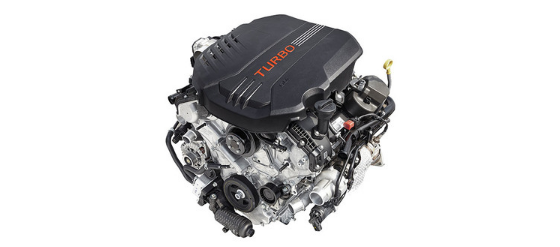Engines for Africa: Find Cost Effective and Reliable Auto Parts Here!
Engines for Africa: Find Cost Effective and Reliable Auto Parts Here!
Blog Article
The Pursuit for Ultimate Driving Power: Examining the Pinnacle of Engine Performance and Technological Breakthroughs in the Automotive Sector
In the realm of automotive design, the pursuit of maximum driving power has actually been a relentless mission that has actually unfolded through the advancement of engine design and the combination of cutting-edge innovations. From the thorough craftsmanship of combustion engines to the fast advancements in electrical propulsion systems, the vehicle market stands at the cusp of a new age defined by extraordinary efficiency capacities. As researchers and designers delve deeper right into the realms of computational fluid characteristics and discover innovative fuel technologies, the horizon of possibilities broadens greatly. Stay tuned as we unravel the complex tapestry of technical breakthroughs that are shaping the future of auto power and efficiency.
Development of Engine Layout

Furthermore, the assimilation of turbocharging and supercharging modern technologies has reinvented engine layout by increasing power without dramatically increasing engine size. These forced induction systems compress the consumption air, permitting more fuel to be combusted, therefore generating higher power outcome from a smaller sized engine. This development has actually been particularly important in enhancing the performance of smaller sized displacement engines while preserving fuel effectiveness criteria.

Performance-Enhancing Fuel Technologies
The execution of advanced fuel modern technologies has significantly contributed to boosting engine performance in contemporary lorries. Biofuels, derived from sustainable resources like algae, corn, or sugarcane, offer boosted and reduced emissions engine efficiency. Additionally, fuel additives and cleaning agents are being developed to tidy engine components, maximize burning, and minimize friction, therefore increasing overall automobile efficiency.
Innovations in Electric Propulsion
Substantial strides in electrical propulsion modern technology have revolutionized the auto sector, leading the way for a brand-new era of lasting and reliable transport. Electric vehicles (EVs) are acquiring popularity because of their environmental advantages and innovations in battery innovation, making it possible for longer driving ranges and shorter charging times. Manufacturers are investing heavily in r & d to boost the efficiency of electric propulsion systems, focusing on increasing power output, improving power performance, and lowering total weight.
One remarkable advancement in electrical propulsion is the growth of advanced electric motors that supply higher torque and power density, causing boosted acceleration and overall driving efficiency. Additionally, regenerative stopping systems have been refined to store and record power during slowdown, further boosting the performance of EVs.
Additionally, the integration of smart technologies, such as expert system and predictive analytics, is maximizing the monitoring of electric propulsion systems, making sure optimum performance under different driving conditions. These innovations in electrical propulsion are improving the vehicle landscape, driving the sector in the direction of a more sustainable and amazed future.
Impact of Computational Liquid Dynamics
With developments in electrical propulsion pushing the limits of automotive innovation, the integration of Computational Liquid Dynamics is playing an essential role in enhancing wind resistant performance and boosting total effectiveness in car layout. Computational Liquid Dynamics (CFD) involves using computer simulations to evaluate the circulation of air around a car, making it possible for designers to predict here exactly how style changes will certainly influence aerodynamics without the demand for expensive physical models. By properly modeling air movement patterns, CFD permits the refinement of automobile forms to minimize drag, improve cooling, and improve security.
CFD makes it possible for designers to enhance airflow around elements such as radiators, engine bays, and wheel wells, contributing to improved efficiency and general driving experience. In conclusion, the integration of Computational Liquid Characteristics represents a significant action ahead in the quest for supreme driving power and performance in the vehicle industry.
Future Fads in Engine Advancement
In the dynamic landscape of automotive design, sophisticated improvements are shaping the future trajectory of engine technology. The future of engine style is noted by a strong emphasis on performance, effectiveness, and sustainability. Manufacturers are significantly focusing on creating engines that not only supply high power results but likewise focus on environmental duty by enhancing and lowering emissions fuel efficiency.
One famous fad in engine development is the surge of electrification. Crossbreed and electric powertrains are obtaining traction as practical choices to traditional combustion engines. These modern technologies offer the capacity visite site for substantial reductions in carbon emissions and boosted power performance, aligning with global initiatives to combat climate modification.
Moreover, advancements in materials scientific research and manufacturing methods are making it possible for the manufacturing of lighter and more resilient engine elements. This change in the direction of light-weight products such as carbon fiber and light weight aluminum alloys contributes to improved performance and fuel economic climate.
Final Thought
Finally, the search of best driving power in the auto field proceeds to drive improvements in engine style, gas innovations, electrical propulsion, and computational fluid dynamics. The evolution of these technologies is shaping the future of engine development, leading the way for more effective and efficient vehicles (engines for africa). As the sector proceeds to push the boundaries of what is possible, we can anticipate to see much more cutting-edge advancements in the mission for peak performance
One of the key landmarks in engine style development is the transition from typical carbureted engines to modern-day fuel-injected systems. By exactly metering the gas shipment to each cylinder, fuel-injected engines maximize burning, resulting in better efficiency and minimized environmental influence.
Moreover, the combination of right here turbocharging and supercharging modern technologies has actually transformed engine design by enhancing power without substantially enhancing engine dimension (engines for africa).The application of sophisticated fuel modern technologies has dramatically contributed to boosting engine performance in contemporary vehicles. Furthermore, fuel ingredients and detergents are being developed to tidy engine elements, optimize burning, and minimize friction, consequently boosting total vehicle efficiency
Report this page